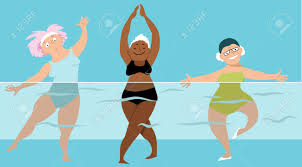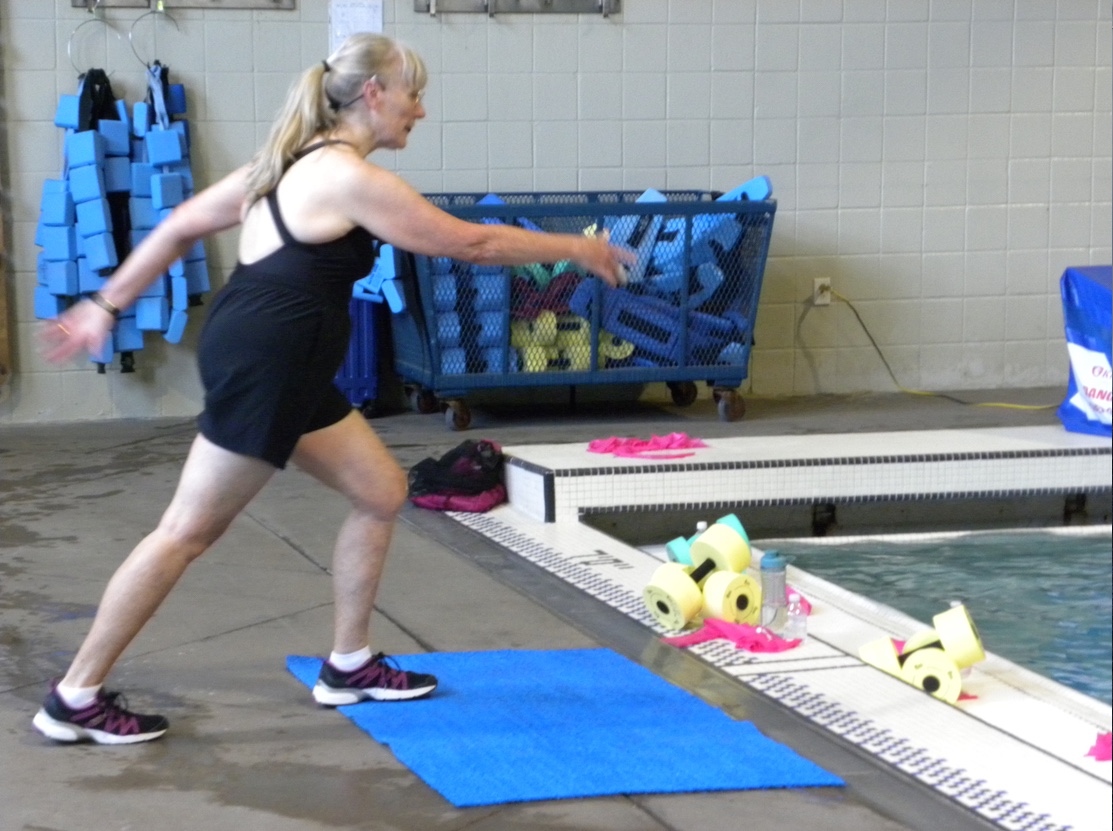
There is a lot to do during the holiday season: shopping, wrapping presents, decorating, baking, holiday parties and more. You know your water fitness class participants need to maintain their exercise routine to help them manage the holiday stress, but sometimes exercise moves near the bottom of their priority list. Try some of the following ideas to make your water fitness class more festive and encourage everyone to keep coming:
Holiday Music. Break out some holiday music to get everyone in a festive mood. All the fitness music companies have Christmas music playlists for sale. Check out:
(1) Super Happy Xmas Step (128-130 BPM) and Xmas Buzz (135 BPM) at Yes Fitness Music www.yesfitnessmusic.com.
(2) Tis The Season – Best of Christmas Hits Remixed (130 BPM) and Christmas Hits Remixed (135 BPM) at Power Music www.powermusic.com.
(3) Core Christmas (128 BPM) and Christmas in Motion (135 BPM) at Muscle Mixes www.musclemixes.com.
Holiday Themed Games and Activities. Add fun activities at the end of your fitness routine to have everyone laughing and looking forward to the next class. Here are two ideas:
(1) Santa’s Sleigh Relay – Divide the class into two reindeer teams. Each person has a noodle around his or her waist. The team members line up behind Rudolph at the front of the line, holding the ends of the noodle belonging to the person in front of them. They run to the back of the pool and return. Rudolph then goes to the end of the line, and the second person in line becomes the new Rudolph. This continues until the original Rudolph is again at the front. The first reindeer team to finish wins.
(2) Twelve Days of Christmas – This Christmas song is perfect for add-on choreography. Select an exercise for each of the 12 days, for example jumping jacks for the Partridge in a Pear Tree and inner thigh lift doubles for the Two Turtle Doves. Sing or speak (if you do not have a good singing voice like me) the lyrics, doing each exercise 8X.
Costumes. This is the perfect time to wear your red swim suit, a Santa hat, a Frosty the Snowman top hat, a red nose or a hat with reindeer antlers.
Holiday Gifts. Show your appreciation for your class by giving them each a small gift. Some gift ideas include a Clementine tangerine, a tree ornament, a peppermint candy cane, a Christmas cookie, a package of hot cocoa mix, or some kind of homemade goodie. Here is an easy recipe if you would like to make your own treats:

Pretzel M&M Hugs
Ingredients: 70 mini pretzels, 70 Hershey’s Hugs (12 oz pkg.), red & green M&Ms
Preheat oven to 200 degrees. Line a cookie sheet with parchment paper. Place pretzels on the cookie sheet in a single layer then top each one with a Hershey’s Hug. Bake 4-5 minutes until chocolate is soft but not melted. Remove from oven and place one M&M in the center and press down to spread the chocolate. Chill for 5 minutes. Place several in individual baggies for each class participant.
Merry Christmas!

Chris Alexander



 The Metroplex Association of Aquatic Professionals (MAAP) offers two continuing education trainings a year. Over the years, Meridan Zerner, MS, RD, CSSD, LD, a dietician with the Cooper Institute, has been the presenter twice. I like Ms. Zerner very much because her health and nutrition advice is easy to understand and follow. I pass the information that I got from her lectures on to my classes in my Tips for the Day.
The Metroplex Association of Aquatic Professionals (MAAP) offers two continuing education trainings a year. Over the years, Meridan Zerner, MS, RD, CSSD, LD, a dietician with the Cooper Institute, has been the presenter twice. I like Ms. Zerner very much because her health and nutrition advice is easy to understand and follow. I pass the information that I got from her lectures on to my classes in my Tips for the Day. Water exercise has many benefits, some of which were highlighted in my last Blog post. In this post I would like to focus on the benefits for your heart.
Water exercise has many benefits, some of which were highlighted in my last Blog post. In this post I would like to focus on the benefits for your heart.